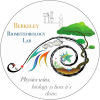Reports
Contents
| Title: | Hill Slough - Radiometer Calibration 2021 | |||||||||||||||||||||||||||||||||||||||||||||||||||||||||||||||||||||||||||||||||||||||||||||||||||||||||||||||||||||||||||||||||||||||||||
| Date: | 2021-06-22 - 2021-06-23 | |||||||||||||||||||||||||||||||||||||||||||||||||||||||||||||||||||||||||||||||||||||||||||||||||||||||||||||||||||||||||||||||||||||||||||
| Data File: | HS_calkit_20210622.csv HS_calNDVI_20210622.csv HS_NRLite_NR01_20220312.csv |
|||||||||||||||||||||||||||||||||||||||||||||||||||||||||||||||||||||||||||||||||||||||||||||||||||||||||||||||||||||||||||||||||||||||||||
| Refers to: | HS,121038,060831,1049,1050,2420,050597,050596,Q100420,2046503368,2046503402 | |||||||||||||||||||||||||||||||||||||||||||||||||||||||||||||||||||||||||||||||||||||||||||||||||||||||||||||||||||||||||||||||||||||||||||
|
From 2021-06-21 to 2021-06-22, we ran a radiometer intercomparison at Hill Slough. The reference sensors consisted of an AMP 4-way radiometer, an AMP PAR sensor, and a pair of Apogee NDVI sensors. The reference sensors were set up on the rad boom adjacent to the tower sensors. The PAR sensor was initially installed facing up to measure incoming light. Halfway through the calibration on 2021-06-16, we turned the PAR sensor so it faced downward and measured reflected radiation. From 2021-03-25 to 2022-03-12 (and beyond), there was both a 4-way radiometer (NR01) and a net radiometer (NR-Lite) installed on the boom. At the bottom of this report I check their alignment before removing the NR-Lite from the tower. The NR-Lite was installed as a temporary sensor while Joe finished repairing the NR01 that had fallen and drowned at BC.
Tower and reference radiometers on radiometer boom at Hill Slough. Note angle of cables blown away from the boom.
Â
Â
 Shortwave Incoming Figure 1. Incoming shortwave radiation. Tower sensor has slightly higher daily max.
Figure 2. Linear regression between tower and reference sensors. Readings <=1mV were ignored for the regression to avoid too much weight on nighttime values. Good fit. Â Shortwave Outgoing Figure 3. Outgoing shortwave radiation. Tower sensor has slightly higher daily max. Some fuzziness overnight.
Figure 4. Linear regression between tower and reference sensors. Readings <=0.2mV were ignored for the regression to avoid too much weight on nighttime values. Good fit. Â Longwave Incoming Figure 5. Incoming longwave radiation. Tower sensor has higher daily maximums and minimums, although the two sensors match very closely when LWin is greater than -50 W/m2.
Figure 6. Linear regression between tower and reference sensors. Pretty good fit with a slight curve when the tower sensor>-0.5 mV (or reference sensors>-50 W/m2).  Longwave Outgoing Figure 7. Outgoing longwave radiation. Tower sensor has higher daily maxes.
Figure 8. Linear regression between tower and reference sensors. Good fit.
Rnet Figure 19. Rnet from the NR-LITE and the reference NR01. Figure 9. Incoming PAR from the reference sensor and 2 tower sensors (PARin sensor and rotating shadowband (RSB) sensor used to measure diffuse PAR). The tower PARin sensor has higher daily maxes compared to the reference sensor and the tower RSB PAR sensor has lower daily maxes compared to the reference sensor.
Figure 10. Linear regression between tower and reference sensors. Measurements <1mV were discarded to avoid too much weight on nighttime values. Good fits. Â Outgoing PAR Figure 11. Outgoing PAR. Tower sensor has slightly lower daily maxes.
Figure 12. Linear regression between tower and reference sensors. Measurements <0.2mV were discarded to avoid too much weight on nighttime values. Good fit. Â NDVI Figure 13. NDVI from tower and reference sensors. The tower sensor is garbage.
Figure 14. Linear regression between tower and reference sensors. Don't use this regression; no point in trying to correct a garbage sensor. Figure 15. Red reflectance. Tower sensor is bad. Figure 16. NIR reflectance. Tower sensor is bad.
NR-LITE vs. NR01 Figure 17. Time series of Rnet from NR-LITE and NR01 sensors using the updated NR01 calibration coefficients calculated from the first part of this report. Very tight fit.
Figure 18. Linear regression of Rnet measured by NR-LITE and NR01 sensors. Very tight fit. NR-LITE and NR01 sensors are consistent with each other. NR-LITE can be removed for other uses. |
||||||||||||||||||||||||||||||||||||||||||||||||||||||||||||||||||||||||||||||||||||||||||||||||||||||||||||||||||||||||||||||||||||||||||||
| |


